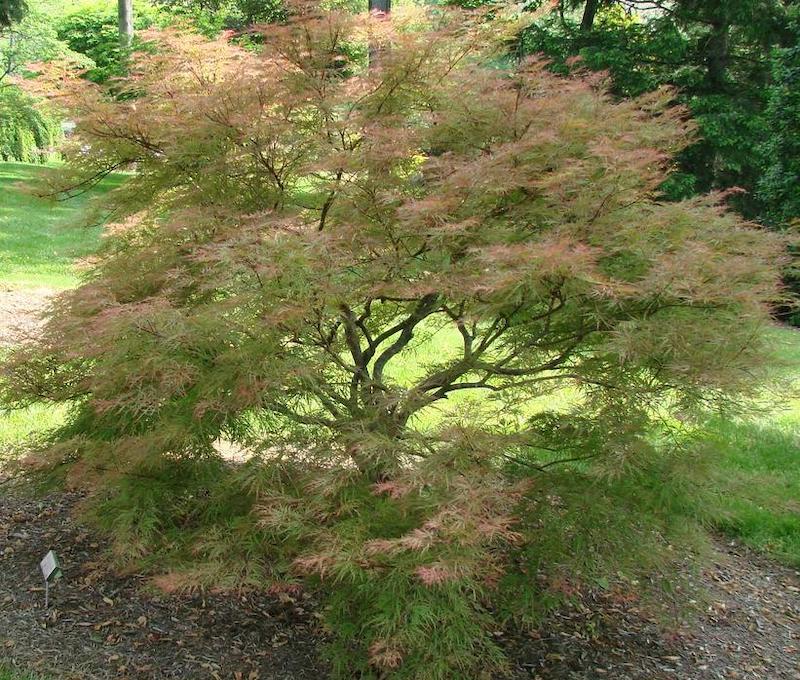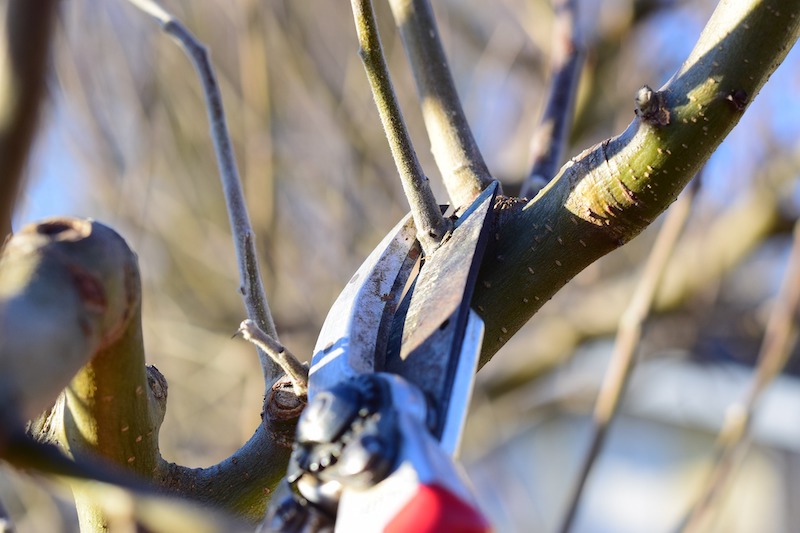Japanese maples, Acer palmatum, are landscape trees treasured for their variety of colors, textures, growth habits, and sizes. In general, Japanese maples are available in two primary forms: upright and weeping. These trees should be pruned to maintain their natural form, rather than encouraging unnatural growth. Japanese maples benefit from pruning to open up the canopy and create overlapping layers that do not make contact with each other. This article will explore how to properly prune Japanese maples for healthy, beautiful plants.

When to Prune Japanese Maples
Japanese maples can handle pruning throughout much of the year, although some times are better than others depending on your goal. For structural pruning, the best time of the year to prune Japanese maples is in late winter. When Japanese maples are dormant in winter, it is easier to see the structure of the tree’s branching. This is the best time to remove larger branches to influence the Japanese maple’s form and branch architecture. Structural pruning may be more difficult to achieve during the active growing season when the trees are densely filled with leaves.
For fine pruning, summer is the best time to shape your Japanese maples. During this time, thin out any thin, weak, or unwanted branches to encourage air circulation and decrease shading of interior leaves. Although the branches will be more difficult to see, summer pruning will result in less unwanted growth as the season progresses. To reduce stress to the plant, avoid pruning during drought periods or on very hot, sunny days. Also, refrain from pruning in spring or fall when leaves are either emerging or senescing, which can also stress the plant. Dead or damaged branches can be pruned at any time.
Why Prune Japanese Maples
Pruning Japanese maples is important for maintaining the delicate, layered architecture unique to these trees. Crossing or overlapping branches can be removed to create distinct layers and prevent chafing of the bark. Any undesired new, excessive, or low-lying growth can be pruned to show off the branching of the trunk. Keep in mind that thin branches of younger trees will develop into mature, graceful branches; be patient and do not prune them out unless necessary. If your Japanese maple was grafted onto rootstock, remove any suckers that grow from the bottom of the tree, as these will not be true-to-type. Pruning for height control is not recommended for Japanese maples and may only result in quicker, weaker spurts of growth. While mainly done for aesthetic reasons, pruning Japanese maples can also help improve air circulation and sunlight access. The end result of proper pruning is stronger, healthier growth.

How to Prune Japanese Maples
Step 1 - Remove smaller branches.
Using clean, sterilized pruners, prune out any unwanted small branches by making a single cut at the branch collar. The branch collar is where the branch meets the main trunk.
Step 2 - Make your first cut on larger branches.
Using loppers or a hand saw, make one partial cut on the underside of the branch, 3-4 inches away from the branch collar. Make sure that your tools are clean and sharp to ensure proper healing of wounds.
Step 3 - Make the second cut.
The next cut should be even further from the branch collar, about less than an inch next to the initial cut. This time, cut all of the way down to form a stub.
Step 4 - Make the last cut.
Make the third cut at the branch collar, again cutting all of the way through to fully remove the remainder of the branch. Do not cut deep into the branch collar, as this will negatively impact the healing process. Using the 3-cut method for larger branches encourages proper wound healing and mitigates bark ripping.
Japanese Maple Pruning Tips
- Prune Japanese maples in late winter or summer
- Remove overlapping branches and root suckers
- Prune out dead, damaged, or diseased branches
- Do not prune more than 30% of the tree per year
- Do not prune branches that are over half the diameter of the trunk
 |
Lauren Youngcourt - Published 04-28-2023 |
